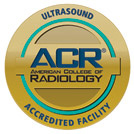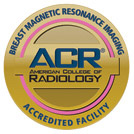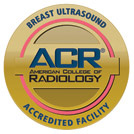An obstetric ultrasound may be requested to view an embryo or developing fetus, the uterus or fallopian tubes. Also known as ultrasound scanning or sonography, this imaging procedure takes pictures with soundwaves instead of ionizing radiation, making it a safer way to monitor pregnant women and unborn babies.
What Is an Obstetric Ultrasound?
In general, ultrasound imaging allows a doctor to monitor, diagnose and treat certain medical conditions. An obstetric ultrasound specifically focuses on the uterus, ovaries and the developing fetus.
An obstetric ultrasound is a safe and painless imaging procedure that uses a transducer to emit high-frequency, inaudible soundwaves and a water-based gel, applied directly to the skin. The gel improves the contact surface for the waves to travel from the transducer through the body. Once the waves bounce back, the transducer collects the information to generate an image.
How are these images created? Like sonar technology, the emitted soundwaves will hit an object and echo back. The transducer takes into account the time it takes for the wave to return and uses this information, plus the wave’s direction to assess the organ’s size, shape and quality. This can be helpful for detecting an abnormal growth, like a tumor.
A computer examines this data to create a picture, which is displayed on the video monitor. Obstetric ultrasounds may show a picture or short video loops.
Depending on the organ being monitored, scans may utilize different transducers and take into account the tissue or body structure the waves are traveling through. For obstetric ultrasounds, the scan may also examine blood flow through the umbilical cord, in the fetus or the placenta.
Your doctor may also request a Doppler ultrasound, a specific application that turns movement into sound, as it evaluates the speed and direction of blood cells as they move through the body. This movement results in a pitch change, also known as the Doppler effect. As the computer gathers information from the soundwaves, it utilizes this data to create color-based pictures to reflect the movement of blood flow.
In general, ultrasound is more accessible, less expensive and safer than other imaging methods for pregnant women and their babies. It also offers greater insight into the body’s tissues, highlighting what ordinarily would not show up on an X-ray. As a result, ultrasound helps to identify some fetal abnormalities and potential risks.
Who Needs This Procedure?
Obstetric ultrasounds are for pregnant women or women who think they are pregnant. A doctor may request this procedure to:
- Determine the presence of an embryo or fetus, including for multiple pregnancies
- Assess the age of the fetus
- Examine the positioning of the fetus and placenta
- Diagnose any congenital abnormalities
- Examine the amount of amniotic fluid around the fetus
- Examine fetal growth and well being
- Observe the opening or shortening of the cervix
Depending on how far along the mother is in her pregnancy, a 3-D ultrasound or transvaginal ultrasound may be requested in some cases, for the amount of detail they provide.
Preparation
Obstetric ultrasounds require no pre-procedure preparation and last about 30 minutes. Patients are advised to wear a loose-fitting two-piece outfit and leave jewelry and anything metallic at home.
As the procedure begins, the patient lies face up on an exam table that the sonographer or radiologist can tilt or move and may be asked to turn to the side for certain images. The technologist will apply the gel to the abdominal area, then places the transducer on the skin, moving back and forth until all images are captured.
As soon as the procedure is done, the technologist will wipe off the gel and you can dress and wait for the results. Afterward, you may resume day-to-day activities.
Has your doctor recommended an obstetric ultrasound? Contact us to make an appointment today!
















